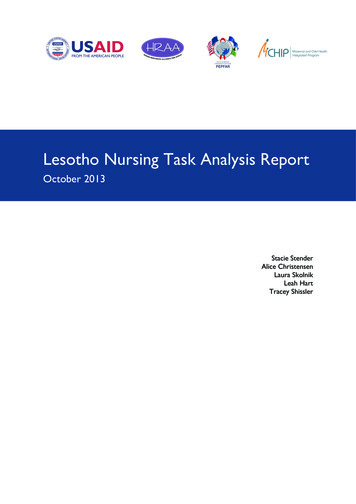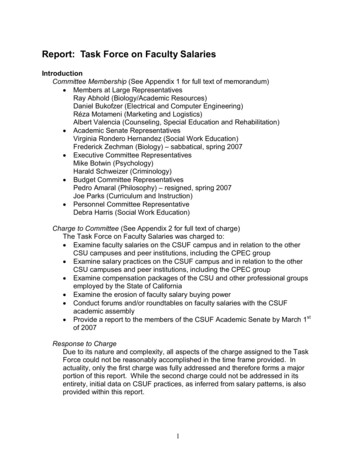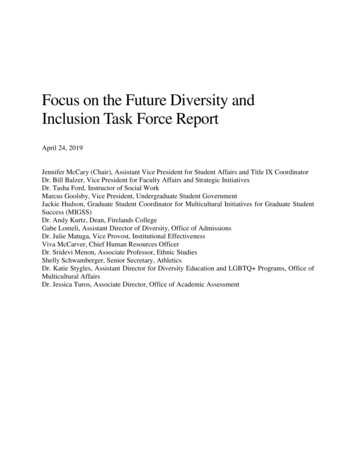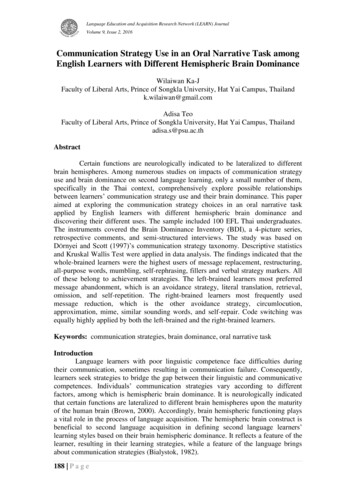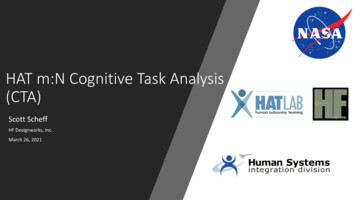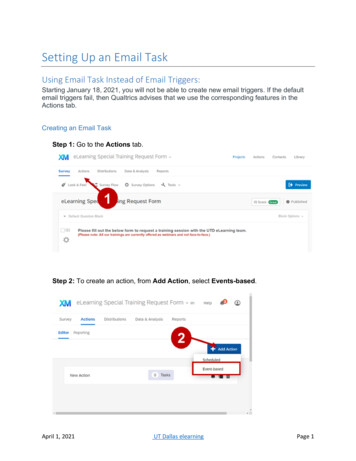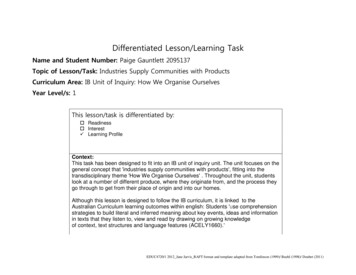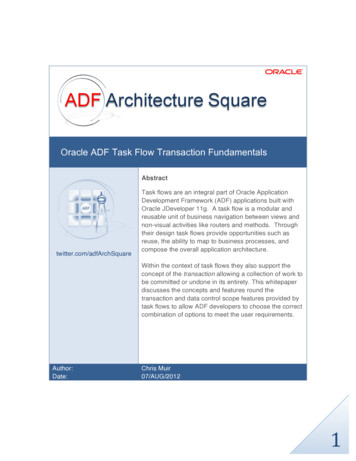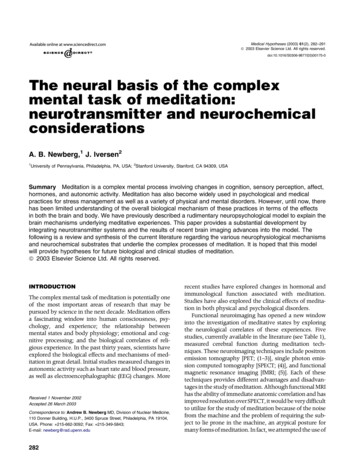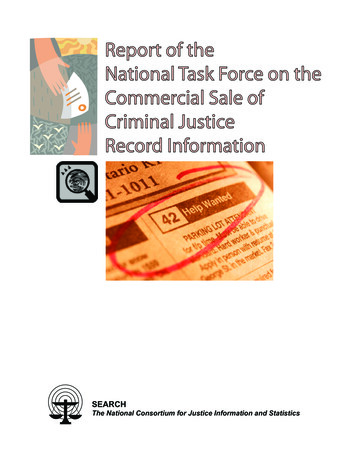
Transcription
Report of theNational Task Force on theCommercial Sale ofCriminal JusticeRecord InformationSEARCHThe National Consortium for Justice Information and Statistics
This report was prepared by SEARCH, The National Consortium for JusticeInformation and Statistics, Francis X. Aumand III, Chairman, and Ronald P.Hawley, Executive Director.This report was produced as a product of a project funded by the Bureau ofJustice Statistics, Office of Justice Programs, U.S. Department of Justice, underCooperative Agreement No. 96-BJ-CX-K010, awarded to SEARCH Group,Incorporated, 7311 Greenhaven Drive, Suite 145, Sacramento, California 95831.Contents of this document do not necessarily reflect the views or policies of theBureau of Justice Statistics or the U.S. Department of Justice.Copyright SEARCH Group, Incorporated, dba SEARCH, The NationalConsortium for Justice Information and Statistics, 2005.
ContentsExecutive summary .viIntroduction . 1A. Background checks post-September 11 .1B. Role of the National Task Force .21. Structure of the commercial information industry .22. Laws, regulations, policies, and practices that impact commercial vendors andend-users of criminal justice information .33. Broader public policy issues associated with criminal background checks .3Part I. The commercial criminal justice record information industry . 5A. Types of personal information sold by commercial vendors .51. Criminal justice record information.52. Other information.6B. Industry size and scope .71. Key industry members .72. Number of records .9C. Commercial vendor business models.91. Compilation of reports .9a. “Runners” .9b. Bulk data purchases .102. More on bulk purchases of criminal justice information.113. Compiler versus reseller .124. Customer base .125. Prices.12a. Factors impacting vendor pricing .12b. Vendor pricing examples.14c. Point of comparison: Report pricing from State criminal history repositories.146. Identification/Record matching.15a. Establishing identity .15b. Identity in the criminal justice context .17c. Vendor practices with respect to name-plus-identifier checks .18d. Vendors and fingerprint-based checks.18D. End-uses of criminal justice record information obtained from commercial vendors .191. Employment screening .192. Volunteer screening .193. Tenant screening .204. Media .205. Immigration-related checks .206. Fraud investigation or prevention .217. Licensing .218. Due diligence.219. Prenuptial analysis .2110. Marketing .2111. Accountability .21ii
12. Litigation research .2113. Opposition research .2214. Voter eligibility .2215. Curiosity .2216. Registered traveler programs .22E. Sources of criminal justice record information for commercial vendors .221. The courts .232. Corrections departments .243. State criminal history repositories.254. Relative “value” of data from repositories, courts, and corrections departments.27a. Repository data .27b. Court and corrections data .28F. Factors in the growing sale of criminal justice information by commercial vendors .281. Automation of criminal justice records .292. Technology revolution.29a. Computing power .29b. The Internet .293. The response to September 11 .314. Marketplace demands .335. Risk/loss mitigation .356. Legal framework/authorization provided by the Fair Credit Reporting Act and State law .357. Unavailability of State and Federal checks in some jurisdictions .358. The “bandwagon” effect .36Part II. Regulation of access to and use of criminal justice record information .37A. Regulation of access to criminal justice record information held by governmentalsources .371. State repositories and the FBI .37a. Federal criminal history record legislation and regulation .37b. National Crime Prevention and Privacy Compact.39c. State statutes governing the receipt and maintenance of criminal history recordinformation by State repositories .39d. State statutes governing dissemination of criminal justice record informationby State repositories .40— Access to criminal justice record information in an “open records” State,such as Florida.41— Access to criminal justice record information in an “intermediate records” State,such as Washington .42— Access to criminal justice record information in a “closed records” State,such as Massachusetts.42e. Federal and State statutes authorizing or requiring criminal background checks .43f. Sex offender registry information .442. Access to criminal history information maintained by courts.45a. Presumption of open public access to court records .45b. General description of court procedures concerning record access .46— Chief justices/State court administrators guidelines for public access to court records.47— Example: New rules governing access to electronic records in California trial courts.50— Example: Access to court records in Washington State .51— Access to court records in the Federal courts.53iii
3. Access to corrections department records .54a. Florida.55b. Kentucky.55c. New York .56d. Montana .564. Access to local police department records .57B. Regulation of the practices of commercial vendors.571. The Federal Fair Credit Reporting Act .58a. Obligations of consumer reporting agencies under FCRA.
screeners engage in a customized search for criminal history record information each and every time they receive a background screening assignment. These types of
